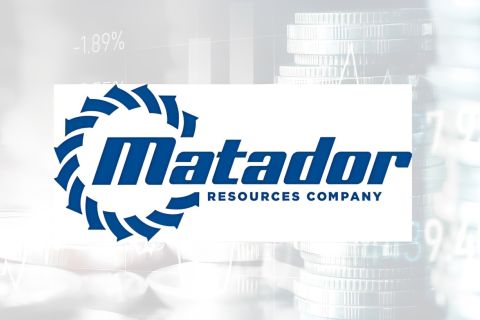(Editor’s note: Since the initial publication of this commentary, some infrastructure-permitting reforms were enacted through legislation tied to raising the national debt ceiling. Read more about those reforms here.)
Over the past few weeks, I have attended several events, both public and private, where energy companies were focused on funding major projects addressing the energy transition. These included concepts such as carbon capture and storage (CCS), hydrogen, LNG exports and geothermal energy projects.
From these discussions, it is apparent that the answers to the following four questions will have a profound effect on the success and pace of the transition: 1) Will we get permitting reform? 2) How do we set a value for decarbonization? 3) What will qualify for the grant and loan programs from the Inflation Reduction Act (IRA)? 4) Will we have adequate interstate pipeline capacity to meet our natural gas needs and our global commitments? As these questions all involve government actions and public policy considerations, there are no easy answers.
It is clear that without permitting reform, IRA goals will not be met. Legislation is needed to address the long delays currently associated with energy and infrastructure projects, and ensure effective regulatory processes for technologies and activities like CCS and hydrogen transportation.
In May, Sen. Joe Machin (D-W.Va.) reintroduced his permitting reform bill that limits deadlines for National Environmental Policy Act (NEPA) reviews to two years—one year for lower-impact projects, sets a 150-day limit for court challenges and includes language to make it easier for the Federal Energy Regulatory Commission (FERC) to approve national-interest transmission lines.
RELATED: Exclusive: Equitrans CEO – MVP’s Approval Can Be ‘Canary in the Coal Mine’
Other permitting bills have been introduced in the Senate that address transmission for renewables, emissions reductions, FERC approvals for pipelines, and onshore and offshore oil and natural gas leasing.
While Sen. Majority Leader Chuck Schumer (D-N.Y.) called the House-passed energy, permitting and infrastructure bill “dead on arrival,” the fact that multiple bills are in play makes it more likely that some kind of permitting package can be adopted this year, perhaps as part of a compromise surrounding the debt limit or budget. In May, the White House published a laundry list of its priorities for permitting reform and acceleration that focused on “clean energy,” and called on Congress to quickly pass legislation.
As to other issues beyond permitting, it is unlikely that the government will establish a value for decarbonization or set a price on carbon in 2023. After passing the IRA, which puts forth hundreds of billions in grants, loans and tax incentives for decarbonization and energy transition projects, Congress feels that it has done its part to address the transition, having spent the political capital to address decarbonization.
Moving legislation that would set a price on carbon would produce a level of political tension that, given the already contentious nature of affairs in Washington and ongoing economic challenges, Congress does not likely have the stomach for. With lawmakers already struggling to find compromise language and a path forward for a permitting bill, a move to impose carbon pricing would only serve to complicate those efforts.
The rollout of the federal programs that have resulted from the IRA is proving to be challenging as well. Deploying the $470 billion in clean energy and infrastructure government investment through numerous federal programs takes time, not to mention additional human resources.
To that end, the U.S. Department of Energy and other federal agencies are having to hire hundreds of workers to help manage these programs and to put forth guidance on who qualifies to receive the federal funds. Until such guidance is published, potential applicants for federal funding face uncertainty that hinders their ability to make business decisions and commitments of capital. In turn, some companies will decide that the uncertainty is not worth the effort, while others will attempt to work with program officers in an effort to obtain clarity or make the case that their particular project or technology should meet the criteria of a given program.
Lastly, getting natural gas to market is a challenge that is becoming increasingly critical as obstacles to permitting interstate pipelines threaten overall takeaway capacity. This is occurring at a time when the U.S. Energy Information Administration is predicting natural gas production to increase by 15% and LNG production to increase by 152% between 2022 and 2050. Gas demand in Europe is helping to fuel this expected export increase, but Asia will be the leading source of demand in the future. Given the significance of expanded pipeline capacity, permitting legislation being considered in Congress may very well address this issue.
Jack Belcher is a principal at Cornerstone Government Affairs, where he focuses on regulatory affairs, risk management and ESG matters within the energy and transportation sectors.
Recommended Reading
Laredo Oil Subsidiary, Erehwon Enter Into Drilling Agreement with Texakoma
2024-03-14 - The agreement with Lustre Oil and Erehwon Oil & Gas would allow Texakoma to participate in the development of 7,375 net acres of mineral rights in Valley County, Montana.
M4E Lithium Closes Funding for Brazilian Lithium Exploration
2024-03-15 - M4E’s financing package includes an equity investment, a royalty purchase and an option for a strategic offtake agreement.
Stockholder Groups to Sell 48.5MM of Permian Resources’ Stock
2024-03-06 - A number of private equity firms will sell about 48.5 million shares of Permian Resources Corp.’s Class A common stock valued at about $764 million.
Matador Stock Offering to Pay for New Permian A&D—Analyst
2024-03-26 - Matador Resources is offering more than 5 million shares of stock for proceeds of $347 million to pay for newly disclosed transactions in Texas and New Mexico.
The OGInterview: Petrie Partners a Big Deal Among Investment Banks
2024-02-01 - In this OGInterview, Hart Energy's Chris Mathews sat down with Petrie Partners—perhaps not the biggest or flashiest investment bank around, but after over two decades, the firm has been around the block more than most.





